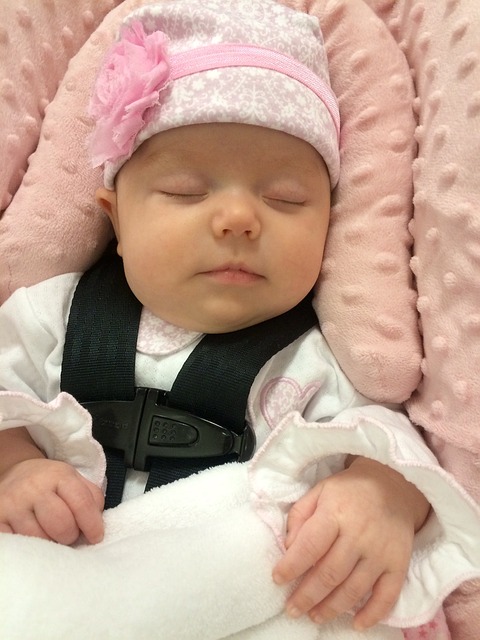
Whether you’re traveling the country and roadschooling your children or you head out on weekend adventures with your family, there are many great ways to make memories when you travel by RV!
However, you also want to make sure your children are safe while you travel. Carseat laws and carseat safety is different for RVs than it is for standard vehicles and you’ll want to read the following carefully to make sure your most precious cargo is secure.

Carseat Laws For RV Travel
There are a few variables in what you need to know about carseat laws for children. First, you’ll want to know the carseat laws for each state you’re driving in or through.
Carseat Laws by State
It’s important to remember that state carseat laws are the minimum restrictions you should consider for your children. State carseat laws are a compromise between safety experts and lawmakers who need to consider many things including what is practical, enforceable, and what rules their citizens will actually follow. You definitely don’t want to do less than the rules specify and you may want to do more.
You can find a list of states and their carseat laws HERE. Simply click on the state or states in which you are traveling to find out their requirements. If you’re driving through several states you’ll want to abide by the strictest regulations and then you can be sure you’re in compliance in every state you visit.

Carseat Safety for RVs
The restraint system you want for your child is going to vary based on the class and type of RV or camper you are traveling in. Here are some things to consider when your child travels by RV.
Class A Motorhome Travel
A Class A motorhome is the large bus-style RV you may see traveling down the road. Class As have bathrooms, kitchens, bedrooms, and other conveniences from home. They usually also have a dinette and eating area, and may have comfortable easy chairs or other seating in the main cabin. Class A motorhomes typically weigh between 13,000 to 30,000 lbs.
If your child is traveling in a Class A motorhome, most newer models have lap restraints installed in rear seats and dinettes. The lap restraints can be used by adults, and can also be used to attach car and booster seats while kids ride.
It may surprise you to know, however, that any vehicle weighing more than 10,000 pounds is not required to be crash-tested, and those vehicles, therefore, don’t need to meet federal seat belt requirements. You’ll also want to make sure the seats you belt your child into are bolted directly to the frame – seats and cabinets in a dinette can often come apart in a crash and it won’t matter if your child is seatbelted in if the seat itself is destroyed.

Class B Motorhome Travel
A Class B campervan is built, well, like a van. They weigh much less than Class As, typically between 6,000 and 11,000 lbs. This means they are, for the most part, subject to federal seat belt laws and standards. You can safely install a carseat in back passenger seats in a Class B van, and many rear sofas and dinettes also have lap belts you can use. If you are renting or purchasing a van, you’ll want to check the seats, however, to make sure the owner didn’t take out any seats to make room for appliances or other features. Make sure you have safe seating for everyone who will be traveling with you.
Also, don’t install a carseat on a side or rear-facing bench.

Class C Motorhome Travel
Class C campers are often recognized as the Goldilocks of motorhomes – a just-right size that is not as big as a Class A RV but with more room for some amenities and features than a Class B camper. Class Cs are built on a truck chassis, but they are often over 10,000 pounds. If they do weigh more, they’re not required to pass the federal seat belt standard.
A Class C with a crew cab featuring back seats like a pickup are the safest place for a child’s carseat. Check your camper to make sure any seat belts are attached to the chassis frame itself and not just to the bench seats, and only place children in forward-facing seats.
Travel Trailer Carseats
Since fifth wheels, teardrop campers, and other travel trailers all require a tow vehicle, that vehicle will have been crash tested and will meet federal seat belt standards. These vehicles are one of the safest places in a crash, both because of the higher standards and because there are fewer items in the vehicle that can fly around during a crash and injure someone.
One Other Solution
If you are concerned about the safety of a motorhome or camper when driving with children, you can also have someone in your party drive a second vehicle along on the trip. The kids will then be riding in a safe, crash-tested vehicle, and you will have a vehicle to drive around when you get to your destination and set up your larger RV at a campground.






